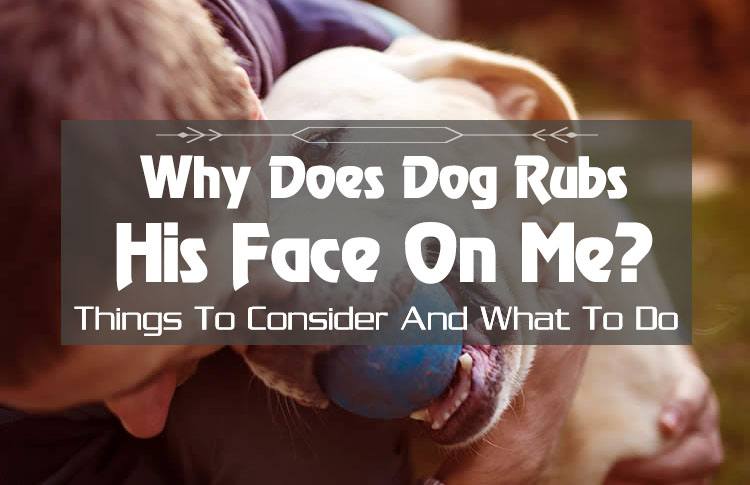Why do dogs sleep in weird positions? If you’ve ever found your dog sprawled out like a starfish, curled into a tight donut, or wedged upside down into the couch, you’re not alone. These quirky sleeping habits may look amusing, but they can actually reveal a lot about your dog’s comfort, temperature regulation, emotional state, and overall health. In this article, we’ll explore seven fascinating reasons behind these unusual sleep positions — and what they can tell you about your dog’s personality, needs, and well-being.
Understanding Dog Sleeping Habits
Similar to people, dogs have distinct sleeping patterns that can provide insight into their feelings, degree of comfort, and even overall health. Understanding dog sleeping habits can help owners provide better care and attention to their pets. Dogs sleep in various positions, each with a specific meaning, and can spend up to 12-14 hours a day sleeping. By recognizing these sleeping positions, owners can gain insight into their dog’s personality, needs, and overall well-being. For example, a dog that sleeps in a lion’s pose or superman pose may be indicating their high energy levels and playful personality. Just like humans, dogs have their own ways of getting comfortable and ensuring they get the rest they need.
Common Dog Sleeping Positions
There are several common dog sleeping positions, each with its own unique characteristics and meanings. These positions include the side sleeper, donut, superman, belly-up, lion pose, cuddle bug, and burrower. Each position can indicate a dog’s level of comfort, relaxation, and trust in their environment. For instance, a dog that sleeps on their side with their legs extended may be feeling calm and secure, while a dog that sleeps in a tight ball or donut position may be seeking warmth and comfort. Additionally, dogs that sleep with their head and neck raised may be indicating their need to breathe easier or feel more secure. Recognizing these common dog sleeping positions can help you better understand your furry friend’s needs and ensure they are as comfortable as possible.
1. Temperature Regulation
Just like us, dogs have their own ways of dealing with temperature changes. One of the primary reasons dogs sleep in different positions is to regulate their body heat. For instance, when dogs curl up tightly, it’s a clear sign they are trying to conserve warmth and protect their vital organs from the cold. This position often comes into play during colder months or in cooler environments.
On the flip side, dogs may choose to sleep on a cold surface or lay flat on their stomachs to cool down. This behavior is common when they feel too warm. You might have noticed your dog sprawling out on the kitchen floor or any other cold surfaces. This action actively reduces their body temperature. In addition to sleeping on cold surfaces, providing cold water can also help regulate their body temperature during warmer days. Some dogs even go as far as sleeping on their backs with their legs in the air, exposing their bellies to facilitate cooling due to the thinner fur in that area. A cooling mat can also provide a comfortable option for them to relax on during warmer days.
The famous “superman pose,” where dogs lay flat with their bellies and limbs stretched out, also helps them cool off. This posture not only helps in lowering their body temperature but also allows them to stay alert to their surroundings. It’s fascinating how such simple sleeping habits can serve essential purposes like maintaining an optimal body temperature.
Lastly, dogs may burrow under blankets or pillows to seek warmth, especially if they feel cold. This behavior is not just about seeking warmth but also provides them with a sense of security. Recognizing these habits ensures your dog stays comfortable regardless of the weather.
2. Comfort and Security
Dogs, much like humans, have their own preferences when it comes to sleeping positions. These positions often reflect their need for comfort and security. One of the most common position is the donut position, where dogs curl up into a tight ball. This position not only conserves body heat but also provides a sense of security and comfort. Dogs love to feel safe while they sleep.
Side sleeping is another popular position among dogs. When dogs sleep on their side with their limbs relaxed, it usually indicates that they are happy, relaxed, and feel secure in their environment. This common sleeping position allows them to stretch out and rest in a comfortable sleeping position, often leading to deep sleep and a more restful sleep. Additionally, side sleeper dogs often exhibit these behaviors. If you notice your dog prefers to sleep in this position, it’s a good sign of their comfort and security.
On the other end of the spectrum, a dog sleeping on its back with their legs in the air is showing the highest level of trust and relaxation. This vulnerable position indicates that the dog lays completely relaxed and secure in its surroundings. It’s a sign of a well-adjusted and confident dog.
Some dogs prefer to sleep with their head and neck raised, which can sometimes indicate potential breathing issues. Dogs might also choose this position to observe their surroundings while resting. Lastly, the curled-up position can sometimes indicate anxiety or insecurity, especially if the dog feels the need for additional support or protection.
Recognizing these sleeping patterns and positions helps create a more comfortable environment for your furry friend. Whether it’s providing a cozy dog bed, soft toys, or ensuring a suitable temperature for the best sleep, these small changes can significantly enhance your dog’s comfort and well-being.
3. Health Conditions
A dog’s sleeping position can often be a window into their health. For example, if your dog frequently sleeps with its head and neck elevated, it might be an indication of breathing issues or respiratory problems. This position helps to keep their airways open and can be a sign that your dog is struggling with conditions like chronic heart disease.
As dogs age, their sleeping habits and positions can change significantly. Older dogs tend to sleep more often and for longer periods, which can be a sign of health issues like cognitive decline or arthritis. These health conditions can make it uncomfortable for them to sleep in certain positions, such as the belly-up position, due to the pressure it puts on their spine. Providing an orthopedic dog bed can help minimize pressure on their joints and improve their sleep quality. Monitoring your dog’s sleeping habits can help identify any changes that may indicate underlying health issues.
Dogs suffering from arthritis may avoid sleeping positions that put additional strain on their stiff joints. Instead, they might prefer softer surfaces that provide more support. If you notice your dog frequently changing their sleeping position, it could be a sign of discomfort or pain, possibly accompanied by barking or squeaking.
Regular check-ups with your veterinarian can help address any underlying health conditions and ensure even their health gets the best possible rest.
4. Emotional State
A dog’s emotional state plays a significant role in their choice of sleeping positions. For instance, dogs that sleep on their sides are generally relaxed and confident, allowing them to fall asleep easily. This position indicates that they feel safe and secure in their environment. It’s a clear sign of a happy and content dog; understanding what dog sleeping positions mean can provide further insight into their feelings.
On the other hand, dogs that curl up tightly into a curled up ball may be feeling insecure or cold. This position showcases their instinct to protect vital areas and conserve body heat. If your dog frequently changes sleeping positions, it might be a signal of discomfort or emotional distress.
The ‘lion pose’, where a dog lies with its front legs stretched forward on its paws in the air and legs extended, indicates a state of relaxation while remaining alert and ready to respond to their environment. This position is often adopted by protective breeds who want to stay vigilant in the lion’s pose.
Another telling position is when a dog sleeps with their belly exposed, showing complete trust and comfort in their surroundings. Recognizing these emotional cues allows you to better connect with your furry friend and notice your pup to address any potential issues. This behavior is completely normal.
5. Environmental Factors
The environment in which a dog sleeps can significantly influence their sleeping habits and positions. Dogs may choose to sleep on the floor when they become too hot. Alternatively, they might prefer it if their bed is too soft. This behavior is often a way for them to find a more comfortable and cooler spot.
In hot weather, dogs may prefer to sleep downstairs where it is cooler, helping them regulate their body temperature.
A comfortable sleeping environment is crucial for your dog’s well-being. This involves providing a cozy dog bed, soft toys, and maintaining a suitable temperature. A softer surface like a bed with memory foam may be preferable for dogs with joint or muscle issues. Factors like the temperature, availability of comfortable surfaces, and even the presence of favorite toys can all contribute to better sleep for your furry friend.
Dogs may also move from spot to spot while sleeping, trying to find the perfect place that meets their comfort needs. This behavior is common in dogs who are sensitive to temperature changes or those looking for a more comfortable surface to rest on. Providing a variety of sleeping options helps your dog find the best spot for a good night’s sleep, reflecting their dog sleeping habits.
6. Breed Characteristics
Just like humans, dogs who sleep have their own preferences for sleeping positions, and these can be influenced by their breed characteristics. For instance, breeds like French Bulldogs, Boxers, and Pugs are commonly known to sleep in the ‘Superman’ position, which is often seen in playful dogs. In this position, they lay flat on their stomachs with their legs stretched forward. This position lets dogs take a nap without fully falling asleep. It is commonly observed in high-energy dogs. Additionally, the 10 dog sleeping positions can reveal a lot about a dog’s sleeping position and their comfort and relaxation levels.
Greyhounds, on the other hand, often prefer the belly-up position due to their lean bodies and shorter fur. The ‘Donut’ sleeping position is favored by breeds like Shelties, Pomeranians, and Boston Terriers, who tend to curl up into a tight ball to conserve heat and feel secure.
Protective breeds often adopt the ‘lion pose’, reflecting their loyalty and alertness. Golden Retrievers and Bulldogs are more likely to sleep in the Back-to-Back position, which indicates a sense of companionship and trust. Recognizing these breed-specific tendencies allows you to better cater to your dog’s sleeping preferences.
7. Age and Development
As dogs age, their sleeping positions and habits can change. Puppies, for instance, may sleep in unusual positions as they are still developing body awareness. Adequate sleep is essential for their growth and development, and they often need more sleep than adult dogs. Additionally, a dog’s sleep patterns can vary significantly as they mature.
Older dogs, on the other hand, may switch from belly-up sleeping due to the pressure it puts on their spine, especially if they experience arthritis. Senior dogs often prefer sleeping on their side for comfort and may sleep more during the day due to having less energy. These changes in sleeping habits are natural and can be addressed by providing comfortable sleeping arrangements suited to their age and health conditions.
Both puppies and older dogs tend to sleep on their side, indicating relaxation and a sense of security. As dogs age, they might develop new sleeping preferences or changes in their sleeping positions. Awareness of these changes ensures you provide the best care for your puppies and senior dogs throughout their life stages.
Creating a Comfortable Sleeping Environment
Creating a comfortable sleeping environment is essential for a dog’s health and well-being. Owners can provide a comfortable dog bed, keep the room at a comfortable temperature, and ensure the area is quiet and free from distractions. Additionally, owners can establish a consistent sleep schedule and provide plenty of exercise and playtime during the day to promote a good night’s sleep. By understanding dog sleeping positions and creating a comfortable sleeping environment, owners can help their dogs get the best sleep possible and improve their overall health and happiness. For example, providing a cooling mat or a frozen treat can help regulate a dog’s body heat and promote a comfortable sleep. Furthermore, owners can observe their dog’s sleeping patterns and notice if they tend to sleep in a particular position, such as the side sleeper or belly-up position, to better understand their needs and preferences.
Summary
Understanding why dogs sleep in weird positions offers valuable insights into their comfort, emotions, and overall health. From regulating temperature to expressing trust, coping with health issues, or reflecting breed tendencies, every quirky pose has a purpose.
By paying attention to these behaviors and making small adjustments — like providing a cozy bed, managing the environment, or addressing health concerns — you can help your dog enjoy the best possible rest. If you love uncovering fascinating facts about dogs, you’ll appreciate just how much their sleeping habits reveal about their personalities. So the next time you catch your dog snoozing in a funny position, you’ll know it’s not just cute — it’s meaningful.
Frequently Asked Questions
Is it normal for dogs to sleep in weird positions?
Absolutely, it’s normal for dogs to sleep in weird positions! A dog’s sleeping positions can vary widely based on their comfort level, mood, and trust in you.
Why does my dog sleep on its back with legs in the air?
If your dog sleeps on its back with back legs in the air, it means they’re feeling secure and relaxed in their environment. It’s a sign of trust and comfort, so let them enjoy that cozy position!
Why does my dog curl up into a tight ball when sleeping?
Your dog curls up into a tight ball to conserve body heat and seek comfort, especially if he feels insecure. It’s a natural instinct for protection and warmth!
Can a dog’s sleeping position indicate health issues?
Absolutely, a dog’s sleeping position can reveal health concerns. For example, if they sleep with their head and neck raised, it might signal breathing problems or even arthritis.
How does a dog’s breed influence its sleeping position?
A dog’s breed definitely shapes how it likes to snooze, with breeds like Greyhounds often opting for the belly-up position, while French Bulldogs and Pugs enjoy the playful ‘Superman’ pose. So, if your pup’s got a specific sleeping style, it’s likely tied to its breed!





